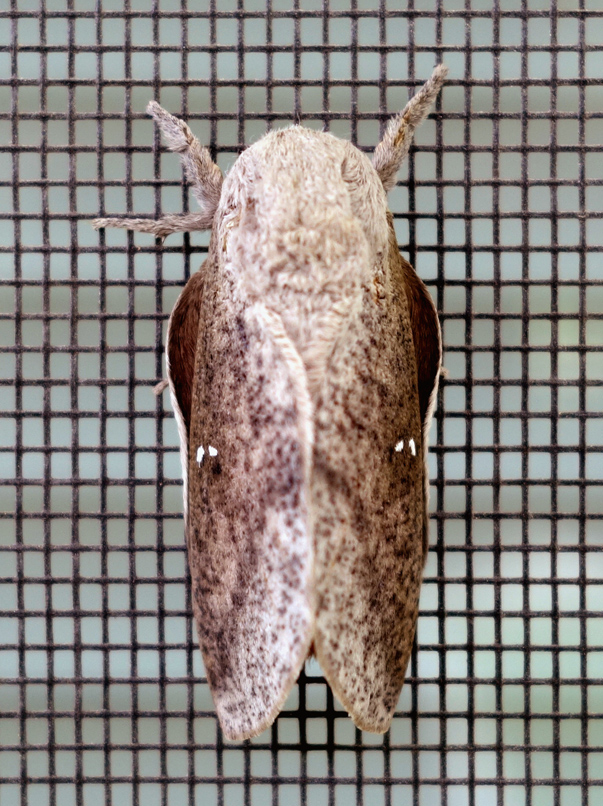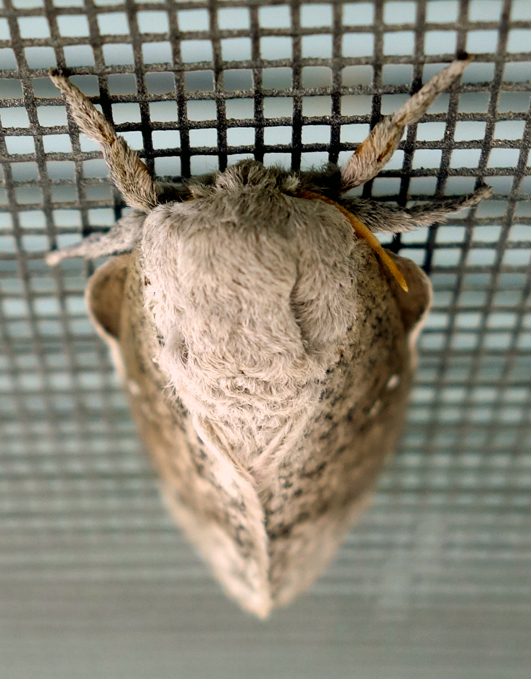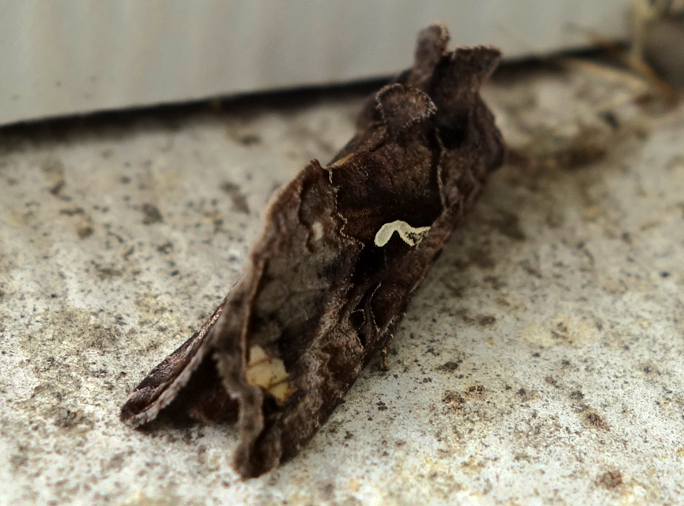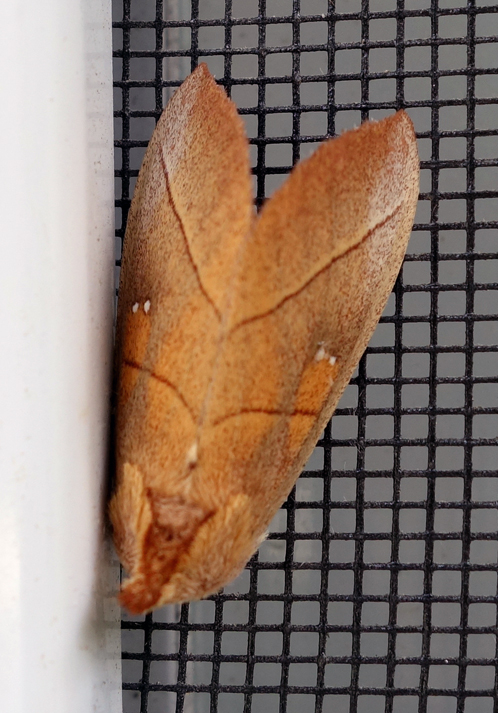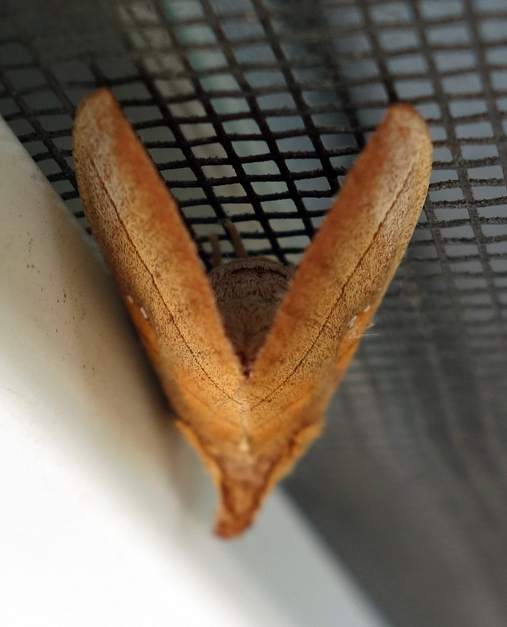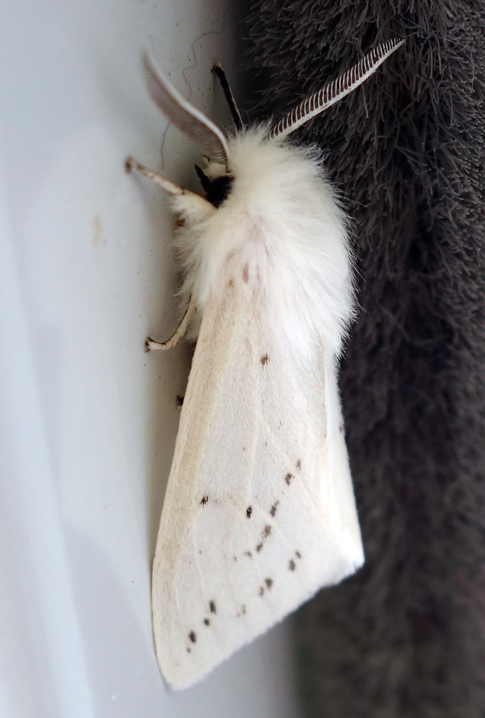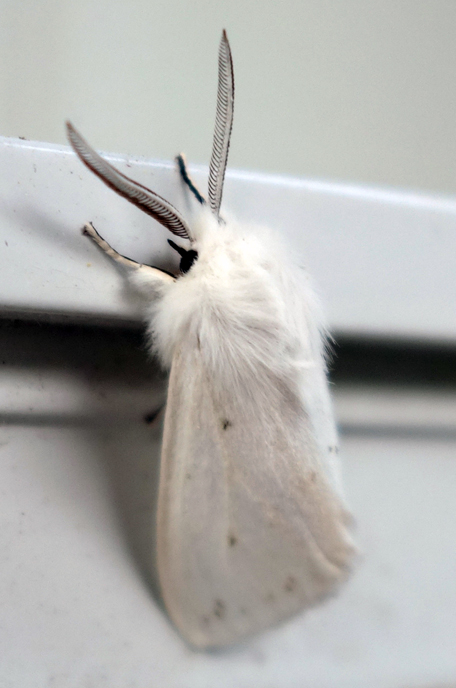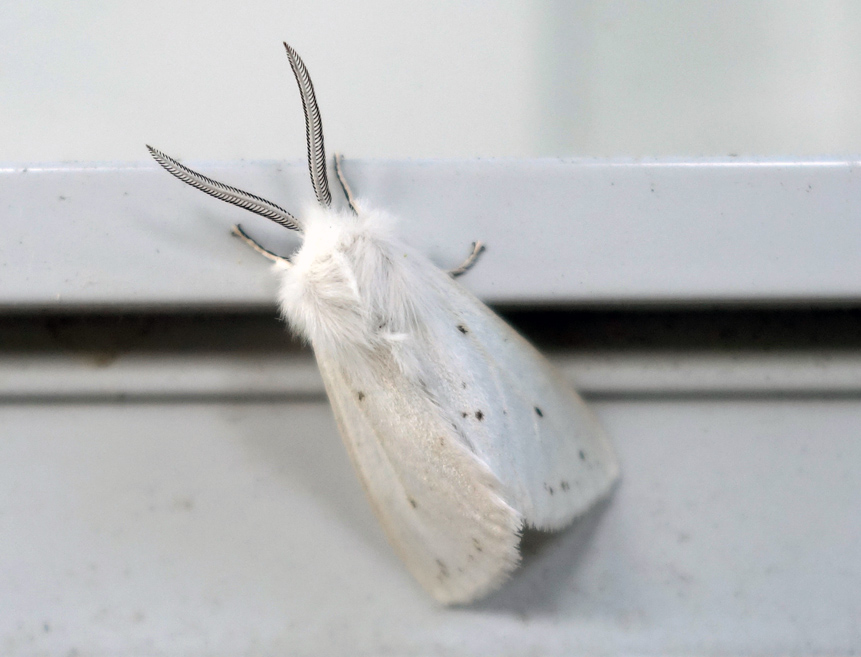Spanish as a language doesn't have a real equivalent to the word "moth." In fact, the most commonly used option is "mariposa nocturna," which means nocturnal butterfly. I kind of think that's a little unfair to both moths and butterflies, though, as I believe there are many that are so visually distinct - not to mention behaviorally - as to merit a different category, not just a subcategory. So yay, English, for giving us both!
I've been seeing a much wider variety of insects (and, really, of animal life in general) on my porch this summer, and the moths have been one of my favorite parts! Here are a few I'd like to share with you. In order from first to last in the slideshow, they are: the honey locust moth (or the bisected honey locust moth) Syssphinx bicolor or Sphingicampa bicolor, a looper moth (inconclusive regarding the exact species given the closed wing position), a looper or a common oak moth Phoberia atomaris, a white-dotted prominent moth Nadata gibbosa, a common gray moth Anavitrinella pampinaria, and a fall webworm Hyphantria cunea.
